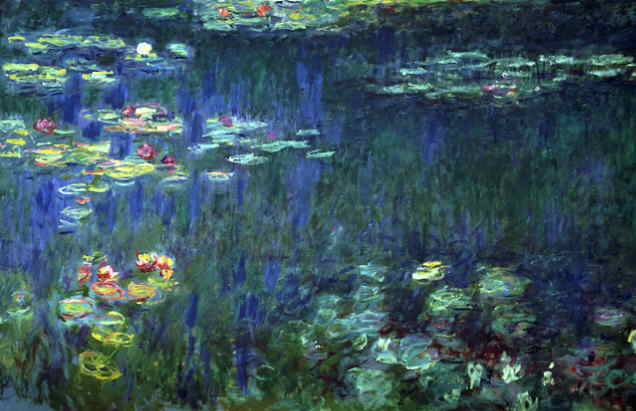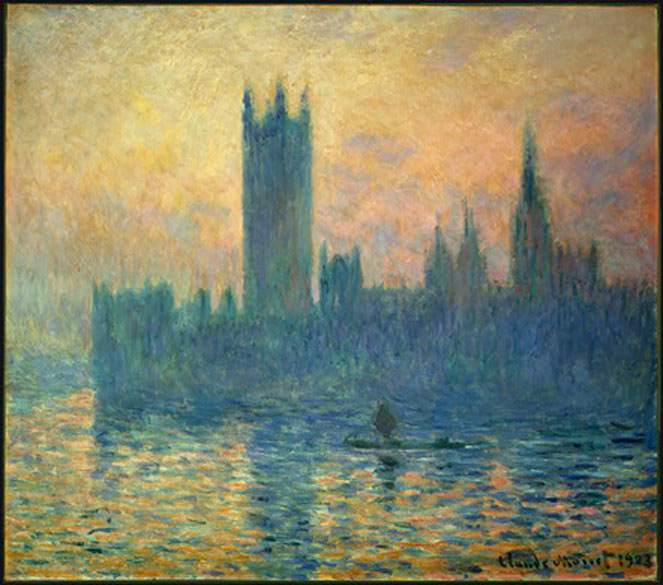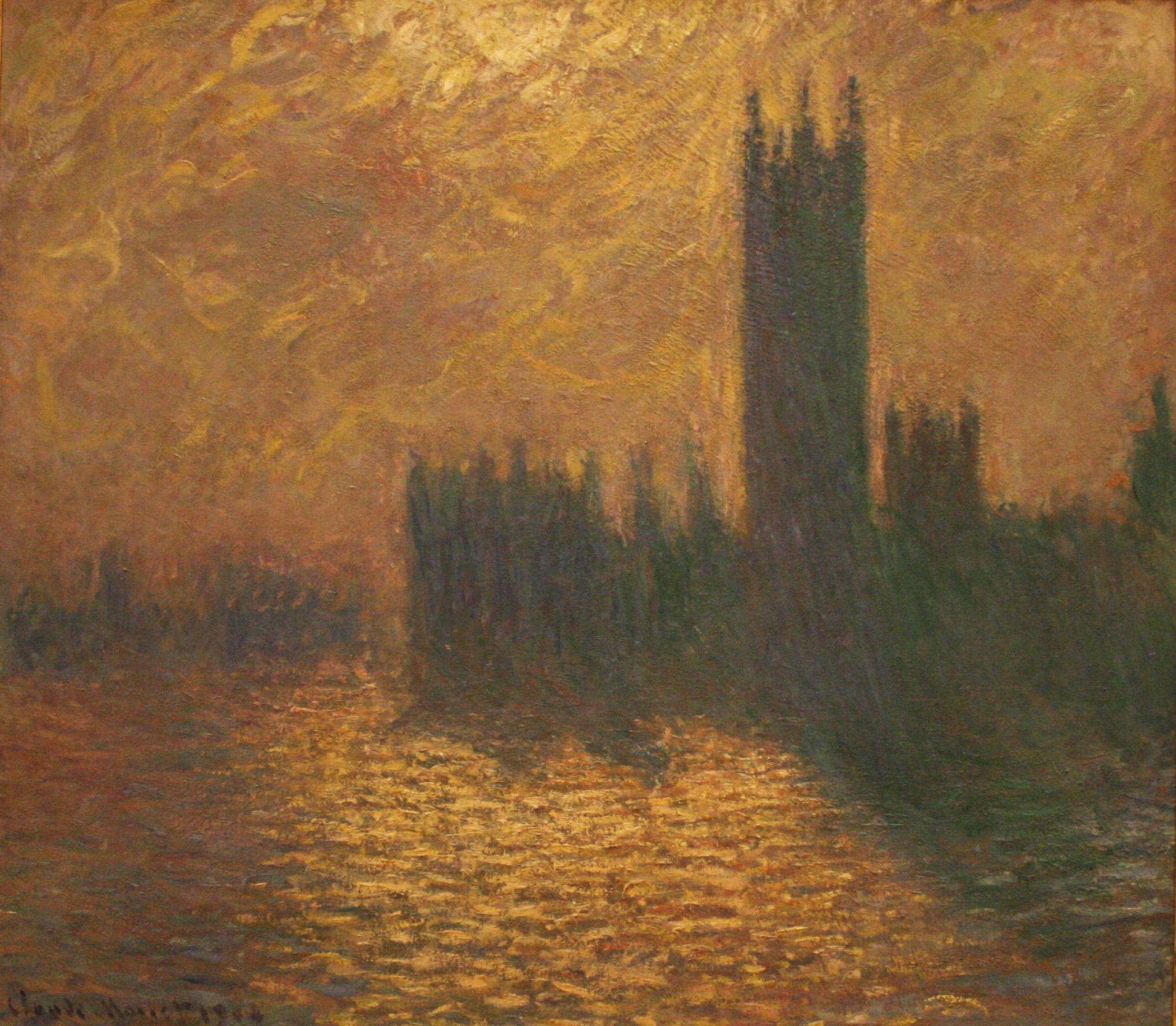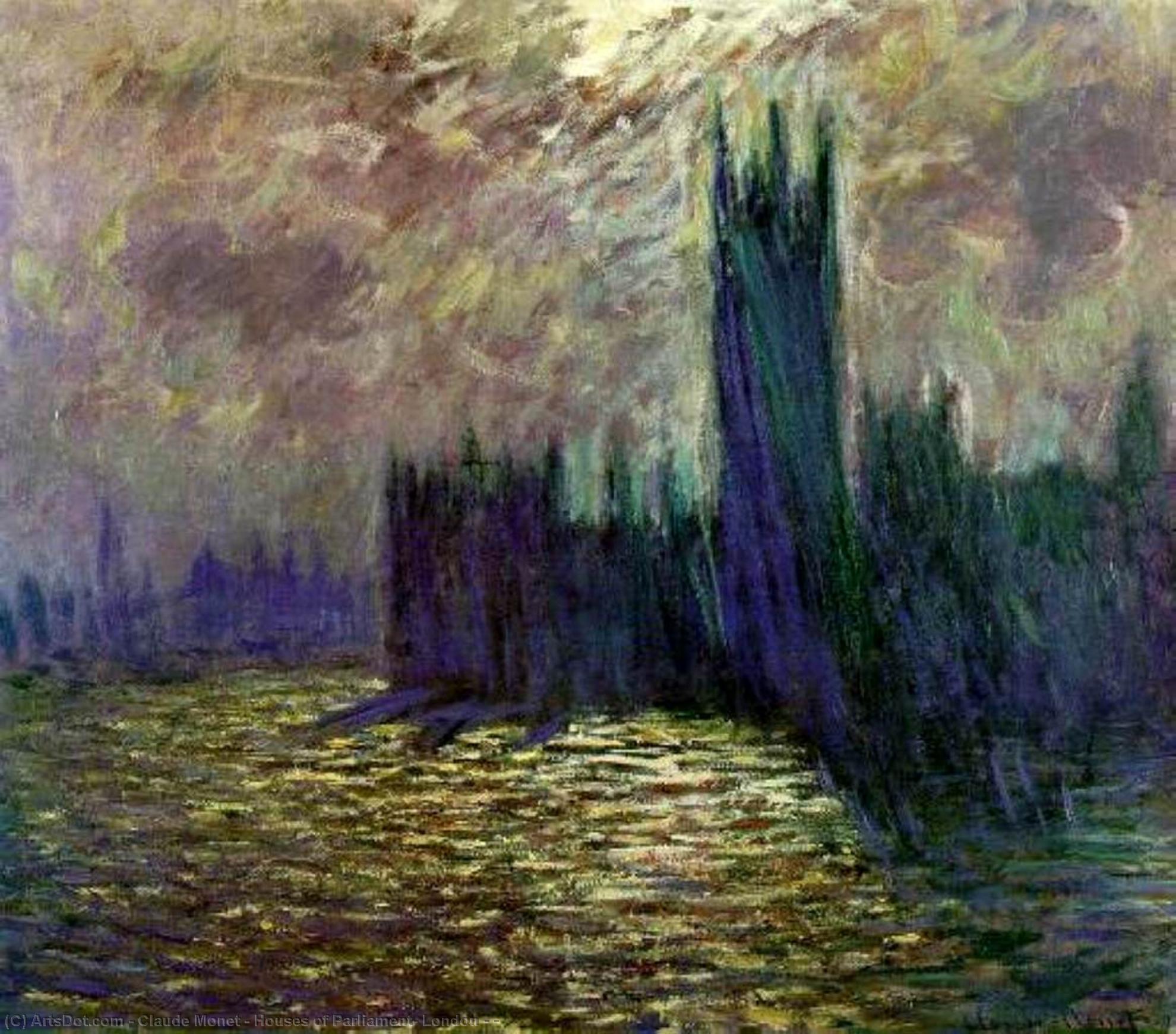Perhaps the most famous of Monet's paintings are his water lilies. From the smaller canvases displayed at museums across the world to the huge lilies at the Musée de l'Orangerie--filling the walls of two circular rooms--his water lilies are iconic Impressionist paintings.
Monet's first series of paintings of a single subject were of haystacks, near Giverny, in the summer of 1890 He first noticed the haystacks on a walk, and believed that two canvases would be enough to capture the changing light: One for the bright daylight and one for dusk. Soon, however, he had many canvases set up simultaneously, working on each as the color and angle of the light and clouds shifted subtly. He continued studying his haystacks through the harvest season and winter, not only showing different time of day but drastically different season.

The effect is that of a person who regularly walks the route that Monet did, through the field of haystacks, who pays attention to detail and light. Instead of becoming accustomed to the landscape and therefore immune to it, Monet uses his experience with the subject to render details even more subtly or brightly, capturing the literal view of the haystack while focusing on the overall tone of the painting. His subtle brushstrokes add texture and movement to the piece, and the motionlessness of his centered horizon lines are offset by the distant mountains in the background.
Color, though, is Monet's main genius; this is excellently captured by this series, as we see the same subject, a similar composition, and yet each painting is totally separate. A blue, brown, gold, or green tint to shadows, a light dusting of white on top of the haystacks, a shadow of color low in the sky to suggest the position of the sun; each contribute to the individuality of the paintings, and are created solely by Monet's adept use of color.
His other series' include populars, also near his home in Giverny. This series was started in 1891, the year after his haystacks were completed. While the composition is significantly different than his haystacks, Monet again focuses on using the same layout and brushstrokes, using only color to create the differences in season and time of day.
His series of the House of Parliament has more varied color and tone than any of his other series', except for his water lilies. Done in 1900-1905, these paintings capture heavy fog, brilliant sunlight, and calm skies.









_-_Claude_Monet.jpg)





























































































































